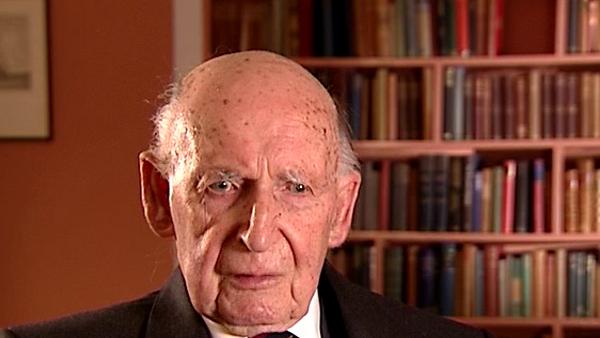NEXT STORY

The Fleck Commitee: Permission to build a 400ft telescope
RELATED STORIES

NEXT STORY

The Fleck Commitee: Permission to build a 400ft telescope
RELATED STORIES


|
Views | Duration | |
|---|---|---|---|
| 91. The MK II telescope | 61 | 02:47 | |
| 92. The Fleck Commitee: Permission to build a 400ft telescope | 53 | 05:12 | |
| 93. No funding for the 400ft telescope | 65 | 03:48 | |
| 94. The MERLIN system | 71 | 03:13 | |
| 95. The survival of Jodrell Bank | 84 | 01:42 | |
| 96. Trying to raise the money to pay off our debts | 68 | 04:04 | |
| 97. The Reith Lectures and USAF Project Able | 88 | 07:48 | |
| 98. The American rockets fail to get to the Moon | 114 | 01:40 | |
| 99. The Russians succeed in sending a rocket to the Moon | 111 | 07:33 | |
| 100. The fairytale end of our debt | 136 | 03:27 |


Once we... we were released from our problems, which arose from the over expenditure on what became the MK I telescope, I had an ambition to build even bigger telescopes, and I consulted with Husband and I said I wanted to build a telescope 600 feet in diameter and he, I'm afraid, took a deep breath and said, 'Well, we'll look into it', and one of the problems was the windage on a reflector of such immensity, particularly the variation of wind with altitude because the wind has always been an important factor and still is in the... in the 250-foot telescope. And so we decided the thing to do would be to build a small model and this resulted in building an elliptical dish, about a hundred feet by 60 feet, which became the MK II telescope.
Now, I applied for money to build this telescope, to the DSIR, and they... they were the... after all, the worries had been cleared up, they... they agreed, but they would not allow me to call it a prototype because it would have implied that we were really going to build a much bigger one, so they gave us a reasonably small grant and we then built which was then the MK II telescope, which came into operation in 1963, I think, and that was interesting because it was one of the very first heavy instruments or machines to be controlled directly by computer. We had... we... we secured an... a Ferranti Argus I computer and used that to control the MK II telescope. That telescope still exists and my successor decided to... it was too difficult to illuminate the elliptical surface and... so it is now... has a subsidiary paraboloid in front of the elliptical surface and can be used as a straightforward paraboloid. That is now an instrument to be used, and was used in conjunction with an inferometer with the MK I radio telescope and is still a part of the MERLIN network.
Bernard Lovell (1913-2012), British radio astronomer and founder of the Jodrell Bank Observatory, received an OBE in 1946 for his work on radar, and was knighted in 1961 for his contribution to the development of radio astronomy. He obtained a PhD in 1936 at the University of Bristol. His steerable radio telescope, which tracked Sputnik across the sky, is now named the Lovell telescope.
Title: The MK II telescope
Listeners: Megan Argo Alastair Gunn
Megan Argo is an astronomer at the University of Manchester's Jodrell Bank Observatory researching supernovae and star formation in nearby starburst galaxies. As well as research, she is involved with events in the Observatory's Visitor Centre explaining both astronomy and the history of the Observatory to the public.
Alastair Gunn is an astrophysicist at Jodrell Bank Observatory, University of Manchester. He is responsible for the coordination and execution of international radio astronomical observations at the institute and his professional research concerns the extended atmospheres of highly active binary stars. Alastair has a deep interest and knowledge of the history of radio astronomy in general and of Jodrell Bank in particular. He has written extensively about Jodrell Bank's history.
Tags: Department of Scientific and Industrial Research, Charles Husband
Duration: 2 minutes, 47 seconds
Date story recorded: January 2007
Date story went live: 05 September 2008